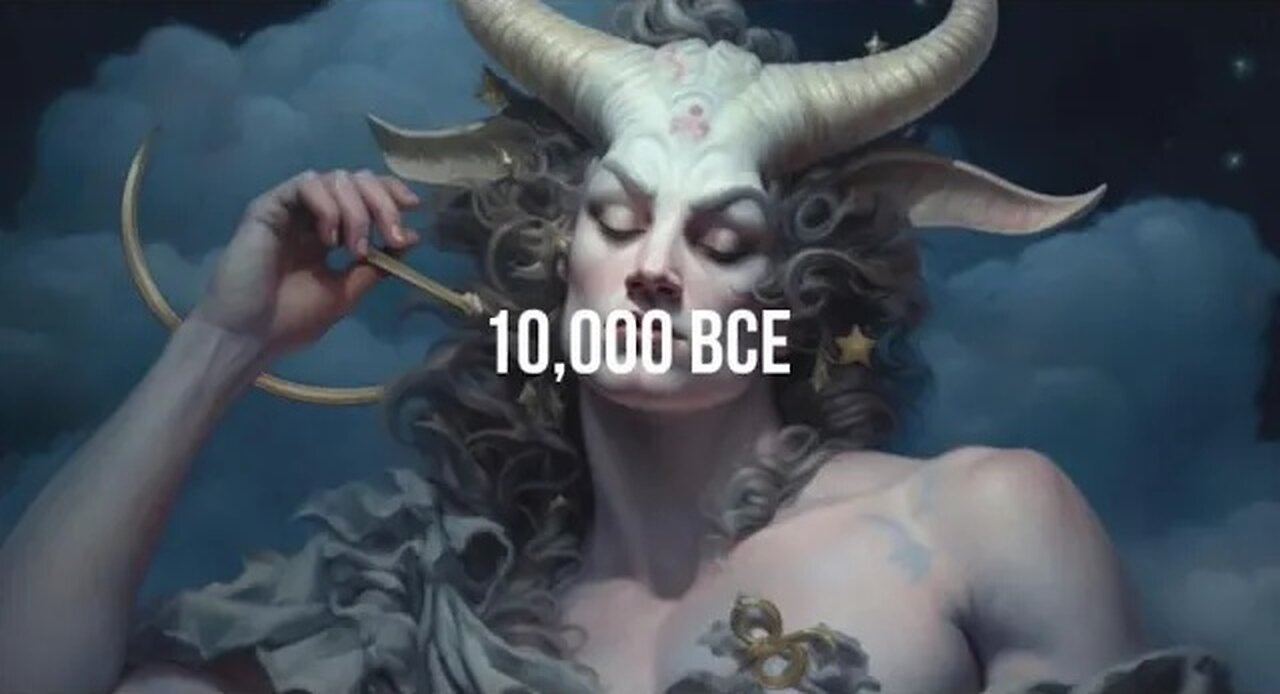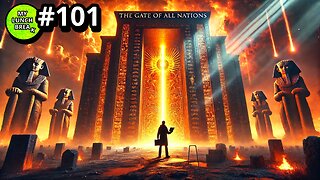Premium Only Content

The OLDEST Religion in the World is INSANE - Documentary. A Fascinating Deep Dive into the Lost Past
The OLDEST Religion in the World is INSANE - Documentary. A Fascinating Deep Dive into the Lost Past
---
A VISUALLY STUNNING DOCUMENTARY
---
FULL OF AMAZING ART
---
295,851 views Jun 11, 2023
---
Proto-Indo-European mythology is the body of myths and deities associated with the Proto-Indo-Europeans, the hypothetical speakers of the reconstructed Proto-Indo-European language.
---
Although the mythological motifs are not directly attested – since Proto-Indo-European speakers lived in preliterate societies – scholars of comparative mythology have reconstructed details from inherited similarities found among Indo-European languages, based on the assumption that parts of the Proto-Indo-Europeans' original belief systems survived in the daughter traditions.
---
The Proto-Indo-European pantheon includes a number of securely reconstructed deities, since they are both cognates – linguistic siblings from a common origin – and associated with similar attributes and body of myths: such as *Dyḗws Ph₂tḗr, the daylight-sky god; his consort *Dʰéǵʰōm, the earth mother; his daughter *H₂éwsōs, the dawn goddess; his sons the Divine Twins; and *Seh₂ul, a solar goddess. Some deities, like the weather god *Perkʷunos or the herding-god *Péh₂usōn, are only attested in a limited number of traditions – Western (European) and Graeco-Aryan, respectively – and could therefore represent late additions that did not spread throughout the various Indo-European dialects.
---
Some myths are also securely dated to Proto-Indo-European times, since they feature both linguistic and thematic evidence of an inherited motif: a story portraying a mythical figure associated with thunder and slaying a multi-headed serpent to release torrents of water that had previously been pent up; a creation myth involving two brothers, one of whom sacrifices the other in order to create the world; and probably the belief that the Otherworld was guarded by a watchdog and could only be reached by crossing a river.
---
Various schools of thought exist regarding possible interpretations of the reconstructed Proto-Indo-European mythology. The main mythologies used in comparative reconstruction are Indo-Iranian, Baltic, Roman, and Norse, often supported with evidence from the Celtic, Greek, Slavic, Hittite, Armenian, Illyrian, and Albanian traditions as well. One of the earliest attested and thus one of the most important of all Indo-European mythologies is Vedic mythology, especially the mythology of the Rigveda, the oldest of the Vedas.
---
Early scholars of comparative mythology such as Friedrich Max Müller stressed the importance of Vedic mythology to such an extent that they practically equated it with Proto-Indo-European myths. Modern researchers have been much more cautious, recognizing that, although Vedic mythology is still central, other mythologies must also be taken into account.
---
Another of the most important source mythologies for comparative research is Roman mythology. The Romans possessed a very complex mythological system, parts of which have been preserved through the characteristic Roman tendency to rationalize their myths into historical accounts.
---
Despite its relatively late attestation, Norse mythology is still considered one of the three most important of the Indo-European mythologies for comparative research, due to the vast bulk of surviving Icelandic material. Baltic mythology has also received a great deal of scholarly attention, as it is linguistically the most conservative and archaic of all surviving branches, but has so far remained frustrating to researchers because the sources are so comparatively late.
---
Nonetheless, Latvian folk songs are seen as a major source of information in the process of reconstructing Proto-Indo-European myth.
---
Despite the popularity of Greek mythology in western culture,Greek mythology is generally seen as having little importance in comparative mythology due to the heavy influence of Pre-Greek and Near Eastern cultures, which overwhelms what little Indo-European material can be extracted from it. Consequently, Greek mythology received minimal scholarly attention until the first decade of the 21st century.
---
Although Scythians are considered relatively conservative in regards to Proto-Indo-European cultures, retaining a similar lifestyle and culture, their mythology has very rarely been examined in an Indo-European context and infrequently discussed in regards to the nature of the ancestral Indo-European mythology. At least three deities, Tabiti, Papaios and Api, are generally interpreted as having Indo-European origins, while the remaining have seen more disparate interpretations. Influence from Siberian, Turkic and even Near Eastern beliefs, on the other hand, are more widely discussed in literature.
---
FAIR USE FOR EDUCATIONAL PURPOSES
---
Mirrored From:
https://www.youtube.com/@GnosticInformant
-
 2:02:54
2:02:54
Mally_Mouse
6 hours agoLet's Play!! - Spicy Saturday
30.1K -
 1:33:06
1:33:06
Slightly Offensive
7 hours ago $20.08 earnedAre You Ready for What's Coming Next? | Just Chatting Chill Stream
48.2K32 -
 32:10
32:10
MYLUNCHBREAK CHANNEL PAGE
1 day agoThe Gate of All Nations
125K54 -
 13:07
13:07
Sideserf Cake Studio
11 hours ago $1.88 earnedIS THIS THE MOST REALISTIC SUSHI CAKE EVER MADE?
46.9K3 -
 21:08
21:08
Clownfish TV
1 day agoElon Musk Tells WotC to BURN IN HELL for Erasing Gary Gygax from DnD!
36.4K14 -
 48:22
48:22
PMG
7 hours ago $6.50 earned"IRS Whistleblowers Speak Out on Biden Family with Mel K In-Studio"
30.1K15 -
 2:59
2:59
BIG NEM
9 hours agoLost in the Wrong Hood: Who Do I Check In With?
24.2K2 -
 1:29:32
1:29:32
I_Came_With_Fire_Podcast
19 hours ago"UFOs, Nukes, & Secrecy: Bob Salas on the 1967 Malmstrom Incident, UAPs, & Disclosure"
137K28 -
 1:57:05
1:57:05
The Quartering
13 hours agoElon Musk To BUY MSNBC & Give Joe Rogan A Spot, MrBeast Responds Finally To Allegations & Much More
129K107 -
 3:01:18
3:01:18
EXPBLESS
14 hours agoFirst Time Playing Extraction Shooters | *LIVE* Arena BreakOut | #RumbleTakeOver
103K9